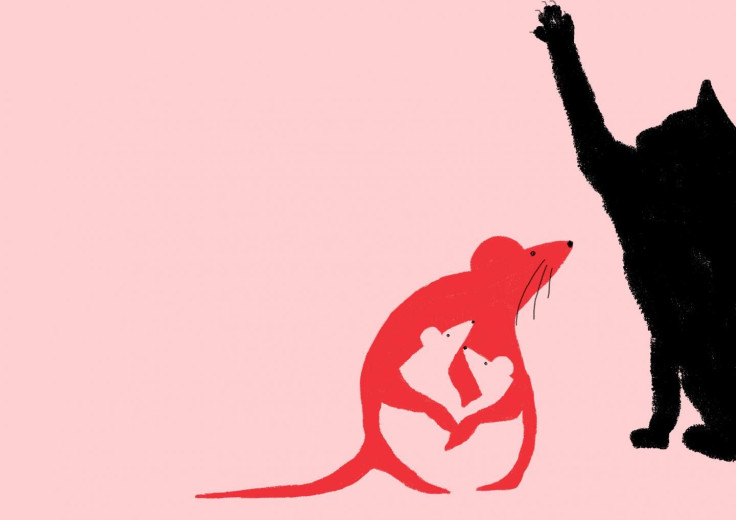A Mother's Love? ‘Love Hormone’ May Make Moms Risk Their Lives For Their Children

A chemical in our bodies commonly called the “love hormone” is what drives mothers to protect their children in dangerous situations, a study found. Researchers who observed rats say oxytocin suppresses the instinct for self-defense, allowing the mama to protect her young and teaching the little ones how to respond to an outside threat in the future.
The study in the journal eLife found rat moms who were trained to fear the smell of peppermint and regard it as a threat, when left under natural conditions, would freeze as a defense mechanism when they were by themselves but move to protect their offspring if the young pups were present. However, when the researchers blocked the oxytocin in the mother rat’s central amygdala in the brain, the mom reacted each time as if she were alone, whether the babies were around or not.
Read: Watch Leopard Mom Fight Off Dangerous Python
The neuroscientists say the results help to unlock some of the mystery of oxytocin — which seemingly has many functions and is not well understood — and how it affects our instincts.
“Animals have many mechanisms to avoid or defend themselves against deadly encounters with predators,” the study said. “However, adult animals frequently put themselves at risk while protecting their more vulnerable offspring from attacks. … This helps ensure that the parent’s genes live on and contribute to the survival of their species.”
But this sort of protective action requires overriding self-preservation instincts. Scientists may have shown how that change takes place in rats, at least.
The hormone oxytocin is present in humans too and has been implicated in many functions that involve social interaction. Previous research has shown it plays a role in breastfeeding and in other aspects of the mother-child relationship.
With its effect on social interactions, oxytocin has also been implicated as a possible clue to understanding and even treating autism. Research has suggested treatments of oxytocin improved attention span, social connections to others and other symptoms in specially bred rats that are also found in humans with autism.
Scientists already had shown releasing oxytocin into the amygdala unfroze animals — inhibiting a defense response in which they remained motionless in the presence of a threat. But the Champalimaud Centre for the Unknown in Portugal said in a statement this new research shows why this mechanism exists: to protect young.
“We put both things together,” study leader Marta Moita said in the statement. “We manipulated a circuit where we know precisely how oxytocin leads to inhibition of freezing.”
Read: Does Evolution Favor the Genes Linked to Autism?
The center explained the mothers who had come to associate the smell of peppermint with an impending electric shock rather than freezing would, when young pups were present, attack the tube through which the scent entered their enclosure or would try to block it with material from the nest. With older pups they would stay in close contact.
It’s possible the protective mother teaches her offspring how to respond in the future by releasing a pheromone during a threat — only the young ones whose mother offered protection during the peppermint release later responded to it by freezing whereas the unprotected pups went about their business as if the threat did not exist. The study said the next step is to learn more about that relationship. And that could tell us more about the relationship between a human mother and her children.
“In all likelihood,” Moita said, “similar mechanisms may be at play in us humans.”
© Copyright IBTimes 2024. All rights reserved.





















